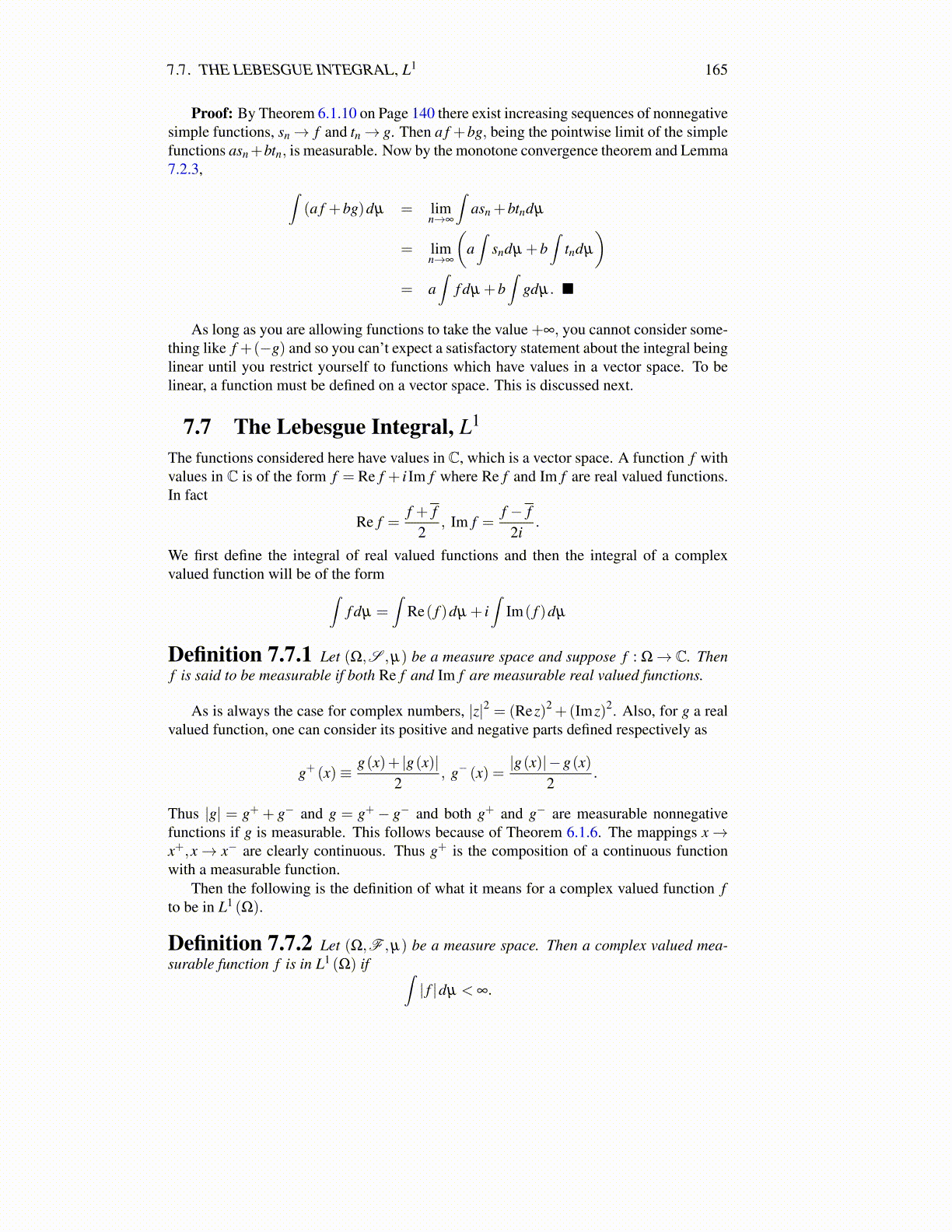
7.7. THE LEBESGUE INTEGRAL, L1 165
Proof: By Theorem 6.1.10 on Page 140 there exist increasing sequences of nonnegativesimple functions, sn→ f and tn→ g. Then a f +bg, being the pointwise limit of the simplefunctions asn+btn, is measurable. Now by the monotone convergence theorem and Lemma7.2.3, ∫
(a f +bg)dµ = limn→∞
∫asn +btndµ
= limn→∞
(a∫
sndµ +b∫
tndµ
)= a
∫f dµ +b
∫gdµ. ■
As long as you are allowing functions to take the value +∞, you cannot consider some-thing like f +(−g) and so you can’t expect a satisfactory statement about the integral beinglinear until you restrict yourself to functions which have values in a vector space. To belinear, a function must be defined on a vector space. This is discussed next.
7.7 The Lebesgue Integral, L1
The functions considered here have values in C, which is a vector space. A function f withvalues in C is of the form f = Re f + i Im f where Re f and Im f are real valued functions.In fact
Re f =f + f
2, Im f =
f − f2i
.
We first define the integral of real valued functions and then the integral of a complexvalued function will be of the form∫
f dµ =∫
Re( f )dµ + i∫
Im( f )dµ
Definition 7.7.1 Let (Ω,S ,µ) be a measure space and suppose f : Ω→ C. Thenf is said to be measurable if both Re f and Im f are measurable real valued functions.
As is always the case for complex numbers, |z|2 = (Rez)2 +(Imz)2. Also, for g a realvalued function, one can consider its positive and negative parts defined respectively as
g+ (x)≡ g(x)+ |g(x)|2
, g− (x) =|g(x)|−g(x)
2.
Thus |g| = g+ + g− and g = g+ − g− and both g+ and g− are measurable nonnegativefunctions if g is measurable. This follows because of Theorem 6.1.6. The mappings x→x+,x→ x− are clearly continuous. Thus g+ is the composition of a continuous functionwith a measurable function.
Then the following is the definition of what it means for a complex valued function fto be in L1 (Ω).
Definition 7.7.2 Let (Ω,F ,µ) be a measure space. Then a complex valued mea-surable function f is in L1 (Ω) if ∫
| f |dµ < ∞.